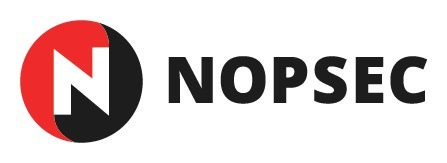You can tell the market is frenzied when fintech companies raise only $101 million this week. That still works out to a $5+ billion annual run rate, which isn’t too shabby. Much of the money went into a Series-D to India’s Financial Software Systems, a 23-year old fintech veteran.
In terms of startups, the big winner this week was Finovate alum,
Quantopian, a high-tech investing play that debuted at
FinovateSpring 2013 (
see post for more info). But
Technisys ($13 million) and Germany’s
Orderbird ($10 million) were not far behind.
In addition, fintech accelerator
SixThirty announced its latest investments: $100,000 each to Davo Technologies, MyMoneyButler, PFTIR and New Constructs (see below for details).
Here are the 17 deals in order of magnitude (10 Oct through 17 Oct):
Payments technology
Latest round: $57 million
Total raised: Unknown (though the latest round is referred to as “Series D”)
Tags: Chennai, India
Algorithmic trading platform
Latest round: $15 million
Total raised: $23.8 million
Tags: Investing, analytics, hedge fund, trading, Boston, Massachusetts, Finovate alum
Latin American digital banking technology
Latest round: $13 million
Total raised: $14 million
Tags: Mobile, Miami, Florida
Mobile POS
Latest round: $10 million
Total raised: $14 million
Tags: Mobile, point of sale, iPad, Berlin, Germany
Mexican P2P microfinance
Latest round: $1.7 million
Total raised: $1.8 million
Tags: Credit, lending, microfinance, P2P, Mexico
Digital currency exchange
Latest round: $1.4 million
Total raised: $1.4 million
Tags: Bitcoin, cryptocurrency, NYC, New York
Mobile payments
Latest round: $760,000
Total raised: $760,000
Tags: Payments, Netherlands
Asian financial planning and advice
Latest round: $640,000
Total raised: $640,000
Tags: Wealth management, PFM, personal finance, investment management, Singapore
Italian collaborative payments company
Latest round: $500,000
Total raised: $500,000
Tags: Payments, mobile, P2P, group payments, Milan, Italy
Automated debt recovery technology
Latest round: $250,000
Totals raised: $5.3 million
Tags: Credit, collections, debt, lending, San Francisco
Japanese bitcoin exchange
Latest round: $236,000
Total raised: $236,000
Tags: Bitcoin, cryptocurrencies, Japan
Sales tax remittances and other business payments
Latest round: $100,000
Total raised: $100,000
Tags: SMB, accounts payable, payments, SixThirty, Montclair, New Jersey
Reduce investment management fees
Latest round: $100,000
Total raised: $100,000
Tags: Investing, fees, SixThirty, Palo Alto, California
PFTIR (Public Funds Investment Tracking and Reporting)
Investment reporting technology
Latest round: $100,000
Total raised: $100,000
Tags: Analytics, investing, enterprise, SIxThirty, Chesterfield, Missouri
Latest round: $100,000
Total raised: $100,000
Tags: Investing, research, equities, SIxThirty, Brentwood, Tennessee
Lending and membership technology
Latest round: Undisclosed
Total raised: Unknown
Tags: Aliso Viejo, California
Latest round: Undisclosed
Total raised: Unknown
Tags: P2P, lending, credit, investing, UK
 TechCrunch: Coinbase CEO Brian Armstrong talks about the future of Bitcoin at Disrupt London.
TechCrunch: Coinbase CEO Brian Armstrong talks about the future of Bitcoin at Disrupt London.
























